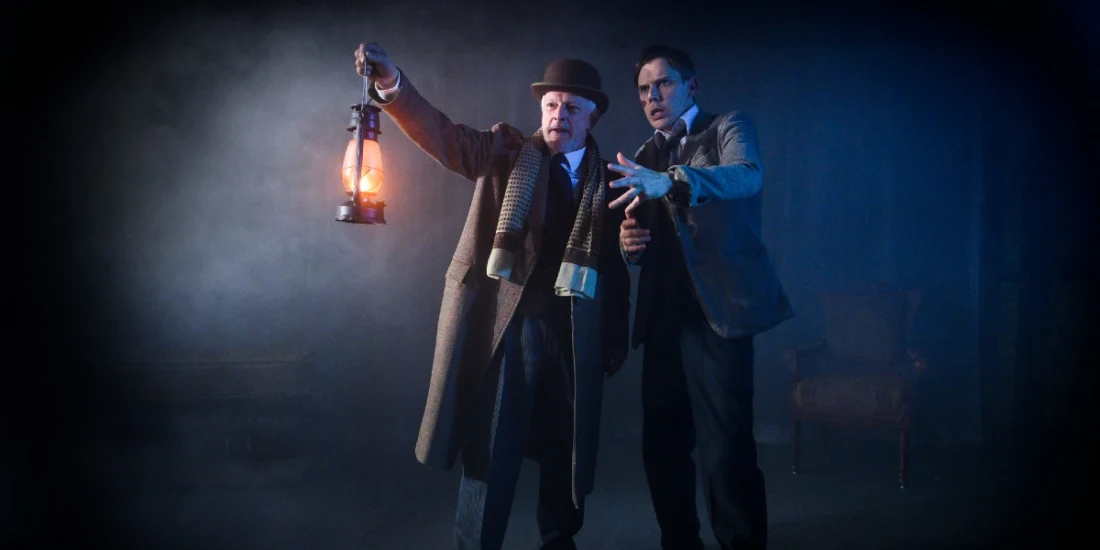'The Woman in Black' review — an old-fashioned, scary communal experience
I've experienced my share of Halloween-themed theatre (including ones where I was blindfolded). But what I've rarely experienced was a room where audience members screamed in fright from all directions. And they were not screaming because of anything typically scary, such as bloody scenes, murders, or anything ghoulish. Instead, the brilliance of The Woman in Black is its use of old-fashioned jump scares and an immersive soundscape to make audiences shriek and jump in their seats.
The Woman in Black is based on the Susan Hill gothic horror novel of the same name. It follows an accountant, Arthur Kipps, hired to review the accounts of the deceased Alice Drablow. He travels to Mrs. Drablow's country manor house to discover, in the manner of all great ghost stories, disturbing noises and a mysterious woman in black with a skeletal face. The Woman in Black has all the tropes of gothic horror: a house in the middle of a formidable countryside, a room with a locked door holding a mysterious secret, and a woman gone mad haunting the house. And as Kipps explores the house, as an audience member, there's a urge to shout, "Don't open the door!" horror-film style.
Speaking of film, The Woman in Black has been adapted for the screen multiple times, most notably including a 2012 adaptation starring Daniel Radcliffe. The stage version by Stephen Mallatratt was created in 1987 (and is currently the second-longest-running production on the West End). The stage version is notable in how it only uses three actors and the bare minimum of props to create an air of tension and fright. And Mallatratt also added a framing device: In his version Kipps (played by David Acton) has hired an actor (Ben Porter) to help him recreate the events of The Woman in Black.
It is unclear why Kipps would want to relive his trauma in such a visceral way. But the framing device does make the case for the show as a piece of theatre: There's an additional fright element in the play version not present in the book or films that will make your blood run cold.
Acton and Porter both reprise their roles from the West End. Porter plays the actor who plays the young Kipps, which may sound convoluted, but he is able to transition between his two roles gracefully. He also has a relatable quality: When he is scared, so is the audience. Acton plays the older Kipps and the other characters in the story, and he transforms well into all of them through a change of coats and also some remarkable accent work.
The sound design by Sebastian Frost also deserves special mention for its ability to transport the audience to the different locations, while making them jump at the most unexpected moments — these are sound effects you truly feel in your bones.
The third actor, who plays the eponymous woman in black, is uncredited and doesn't take a bow with the rest of the cast. It's understandable since the play wants to leave the audiences feeling like they too have seen a ghost. But considering that most of the work of frightening the audience falls on that actor's shoulders, and she more than succeeded judging by the screams of the audience around me, she should at the very least receive a credit in the playbill. And if the show doesn't want to ruin the surprise, wait until the audience goes home and then send them an electronic program.
This omission is particularly egregious considering that the show is very male-dominated: The cast, the director, and most of the crew members are men. Considering the story is about a female ghost, and does fall into the out-of-date mad woman trope, some clear feminine energy would have been welcomed to round out the narrative and complicate it slightly, and perhaps make it more universal. It is 2021 after all; we are all vengeful, angry ghosts after being trapped in our own homes for the last year.
Yet as a good, old-fashioned ghost story, The Woman in Black succeeds in sufficiently spooking the audience. When I left the theatre, stepping back into the cold fall air of New York City, I couldn't help but turn around to make sure no ghosts were following me home.
The Woman in Black runs at the McKittrick Hotel through January 30, 2022. Get The Woman in Black tickets on New York Theatre Guide.
Photo credit: David Acton and Ben Porter in The Woman in Black. (Photo by Jenny Anderson)
Originally published on
